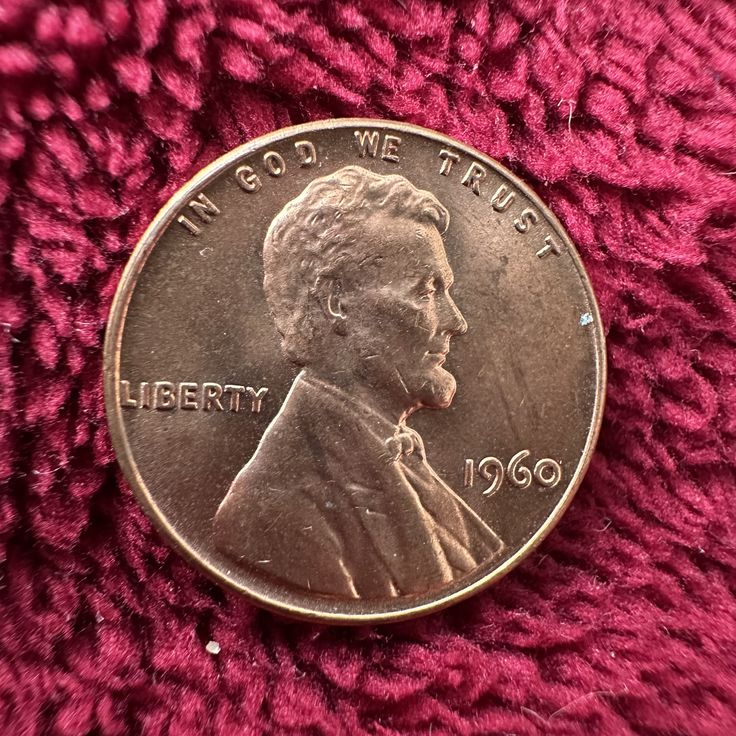
The world of coin collecting is full of surprises, but few are as exciting as the story of the Lincoln Wheat Penny. While most people view pennies as small change, some rare versions of this historic coin are worth up to $815,000—and some could still be floating around in everyday circulation, waiting to be discovered by a sharp-eyed collector or curious shopper.
The Origins of the Lincoln Wheat Penny
First minted in 1909 to celebrate the 100th birthday of President Abraham Lincoln, the Lincoln Wheat Penny was a groundbreaking design by sculptor Victor David Brenner. It was the first U.S. coin to feature a president’s portrait.
The obverse of the coin showcases Lincoln’s profile, while the reverse features two wheat stalks framing the words “ONE CENT.” This iconic design remained in circulation until 1958, cementing the Wheat Penny’s status in American numismatic history.
The wheat stalks weren’t just decorative—they represented the strength of American agriculture and prosperity. Over the years, this coin became a collector favorite, and specific rare editions now command sky-high prices.
What Makes a Lincoln Wheat Penny Worth $815,000?
Not all Wheat Pennies are rare, but a select few are extremely valuable due to their unique minting errors, limited production runs, or historical significance.
Here are some of the most sought-after examples:
The 1943 Copper Penny: A Wartime Error
During World War II, copper was reserved for military use, so the U.S. Mint used steel to make pennies. However, a few copper blanks from 1942 were accidentally used in 1943, resulting in the now-famous 1943 Copper Penny.
These rare error coins have become legendary among collectors. In pristine condition, one of these can sell for up to $815,000 at auction.The 1909-S VDB Penny: A Designer’s Signature
This rare penny was minted in San Francisco and includes the initials “VDB” (Victor David Brenner) on the reverse. Due to public backlash over the prominent initials, the Mint quickly removed them, making this early version very rare.
A 1909-S VDB penny in excellent condition can be worth $100,000 or more.
Other High-Value Wheat Pennies
| Coin Type | Year | Mint Mark | Notable Feature | Estimated Value |
|---|---|---|---|---|
| 1943 Copper Penny | 1943 | None | Copper used in error | Up to $815,000 |
| 1909-S VDB Penny | 1909 | S | Designer’s initials | $100,000–$200,000 |
| 1955 Double Die Penny | 1955 | None | Misaligned printing error | $100,000+ |
| 1914-D Wheat Penny | 1914 | D | Rare Denver minting | $100,000+ |
Note: Values depend heavily on condition and current market trends.
Why Condition Matters
In the world of coin collecting, condition is everything. Coins are graded on a scale from Poor (P-1) to Mint State (MS-70). Higher-grade coins, especially those in uncirculated or mint condition, are worth significantly more.
For example, a 1943 copper penny in average condition might sell for a few thousand dollars—but a mint state version could fetch over $800,000.
How to Spot a Valuable Wheat Penny
Wheat Pennies are instantly recognizable by the wheat stalks on the back. If you spot a penny with this design, it was minted before 1959 and could be worth a closer look.
Rare Wheat Pennies to watch for:
- 1943 Copper Penny (instead of steel)
- 1909-S VDB (with the designer’s initials and an “S” mint mark)
Important Tip: If you suspect you’ve found a valuable penny, never clean it. Cleaning can reduce its value dramatically. Instead, handle it gently and store it in a protective coin holder.
Authentication & Professional Appraisal
If you think you’ve found a rare Wheat Penny, it’s a good idea to consult a professional numismatist or coin dealer. They can confirm authenticity, assess its condition, and estimate its value.
Reputable grading services include:
- Numismatic Guaranty Corporation (NGC)
- Professional Coin Grading Service (PCGS)
These organizations offer official grading and certification, which is especially important if you plan to sell the coin.
More Than Money: The Wheat Penny’s Cultural Legacy
Beyond its financial value, the Lincoln Wheat Penny holds deep historical and cultural significance. It marked the first time a president’s image appeared on everyday U.S. currency and reflects the country’s economic and wartime history.
Many collectors trace their passion for coins back to finding a Wheat Penny in pocket change. For generations, this humble coin has sparked curiosity and a love for American history.
The Future of Wheat Penny Collecting
As more Wheat Pennies are pulled from circulation, their scarcity—and potential value—will only increase. While most aren’t worth thousands, the excitement of finding a rare gem in your change jar keeps collectors hunting.
So, next time you’re handed some loose change, take a second look. That unassuming penny might just be a piece of history—or a treasure worth six figures.
Final Thought:
The Lincoln Wheat Penny is more than just a coin—it’s a symbol of American heritage, and for some, a hidden fortune waiting to be discovered.
